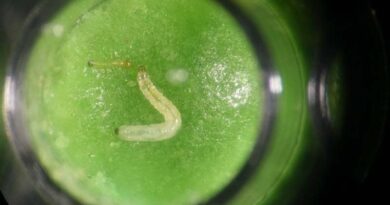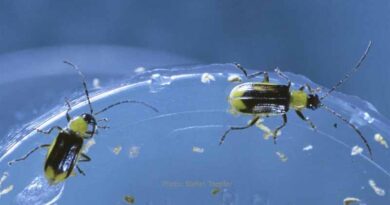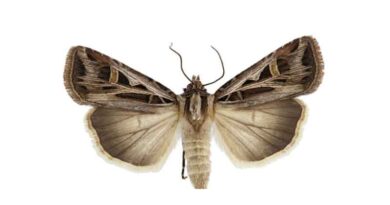How to Prevent Insects from Overwintering in Corn Fields
18 November 2023, US: Your corn crop can face many different insects throughout the growing season, and it seems like they always arrive when the crop is at its most vulnerable growth stage.
Insect pests have evolved their life cycles to match corn development stages. And many of the most detrimental insects overwinter in plant residue, fencelines, waterways or wooded areas, just waiting for the chance to attack.
Which Insect Pests Overwinter?
Some pests overwinter in northern climates as eggs, larvae, pupae or adults. These include:
- Western Rootworm
- Northern Rootworm
- European Corn Borer
- Western Bean Cutworm
- Wireworms
- Japanese Beetle
- True White Grubs
- Corn Flea Beetle
- Common Stalk Borer
- Seedcorn Maggot
- Stinkbugs
- Differential Grasshopper
- Billbug
- Two-spotted Spider Mite
Insect pests that cannot overwinter in northern regions due to cold temperatures include:
- Southern Rootworm
- Black Cutworm
- True Armyworm
- Fall Armyworm
- Corn Leaf Aphid
- Corn Earworm
What Factors Impact Insect Populations?
It is important to understand how insect pests impacted your operation this year. Most insect populations vary from year to year depending on many factors, including:
- Excessive moisture
- Drought
- Prevailing winds
- Tillage
- Winter survivability
- Other environmental conditions
Winter temperatures greatly influence whether or not an insect can overwinter in northern regions.
Bear in mind that there is no set line separating northern and southern regions in the U.S. when it comes to overwintering pests. In some years, Kansas and the southern parts of Missouri and Illinois can be considered part of the southern region if winter temperatures are moderate.
3 Strategies to Reduce Pest Populations Next Season
Understanding which pests were present this season is important when making sound decisions for the upcoming year. And, as always, timely scouting throughout the year is key to any effective management strategy.
1. Know the Limitations of Traited Seed
You might have planted fully traited seed in the past in hopes of protecting your crop from insect damage. While fully traited seed is effective at managing some insects, these seeds do not necessarily protect your crop from all insects. Stay alert to the potential for insects to still impact your crop throughout the season.
2. Use Common Tillage Practices Wisely
Conventional tillage in the fall and spring is a good tool to use when trying to minimize overwintering insect pests. Burying residue—where many overwintering insect pests live—helps to lower overwinter survival numbers.
Keep in mind that you must balance tillage practices with other agronomic concerns, such as erosion and overall soil structure. The more you till the soil, the more soil structure loss you’ll see.
3. Look at Seed Treatments and Herbicide Applications
Seed treatments are a great tool for protecting against early-season pests too, and insecticides applied post-emergence when needed can also protect your investment.
Here are a few post-emergence insecticide options:
- Willowood Lambda-Cy 1EC
- Willowood Bifenthrin 2EC
- Chlorpyrifos 4 Value Pick
- Permethrin SFR
- Asana® XL
Below-ground insecticide options at planting time include:
- GCS Bifenthrin LFC
- Chlorpyrifos 4 Value Pick
Remember to ALWAYS read and follow label instructions. Perform a compatibility jar test prior to mixing any products in your sprayer tank.
Reviewing your scouting records and understanding which insects overwinter — and which ones don’t — will help you be proactive heading into the next growing season.
Also Read: Boosting Millet Production: ICRISAT Joins Forces with the Assam Millet Mission
(For Latest Agriculture News & Updates, follow Krishak Jagat on Google News)















